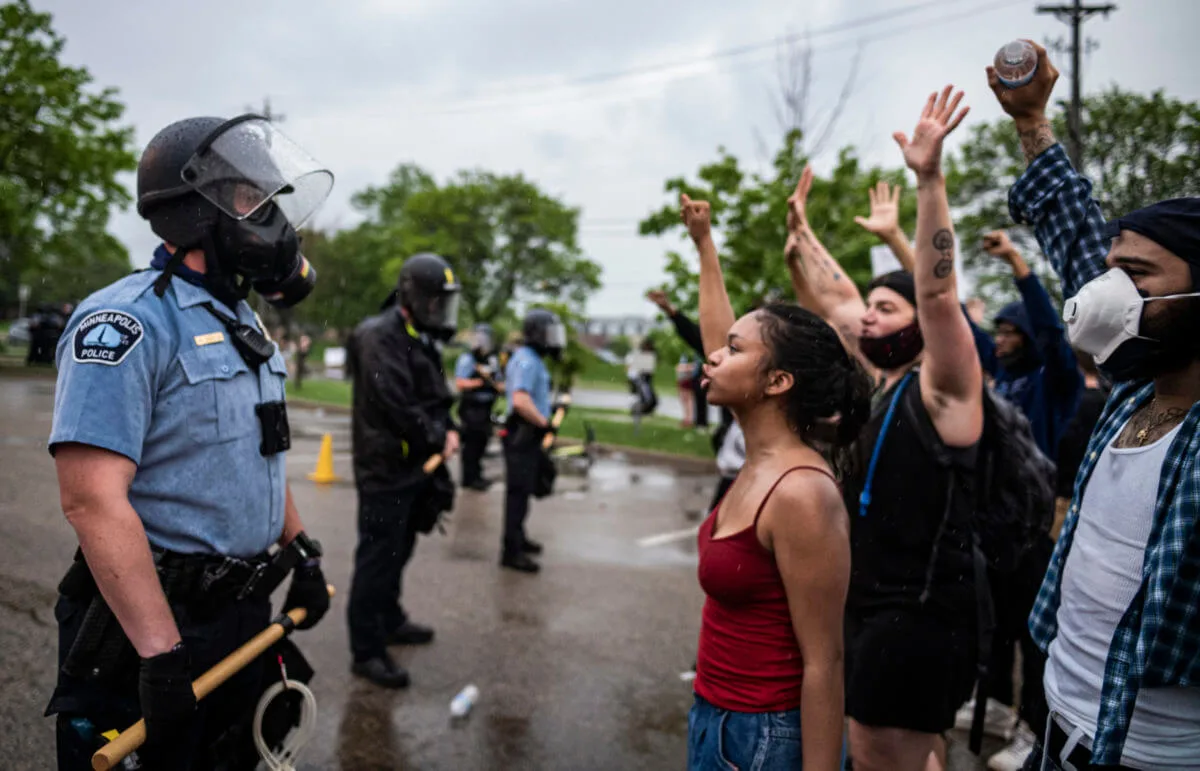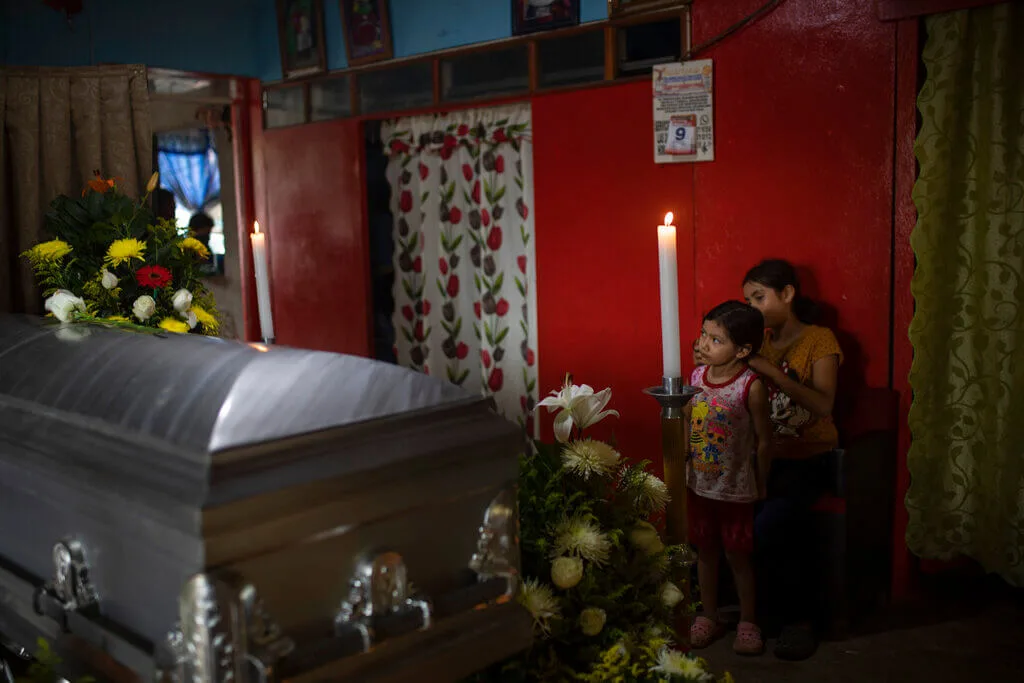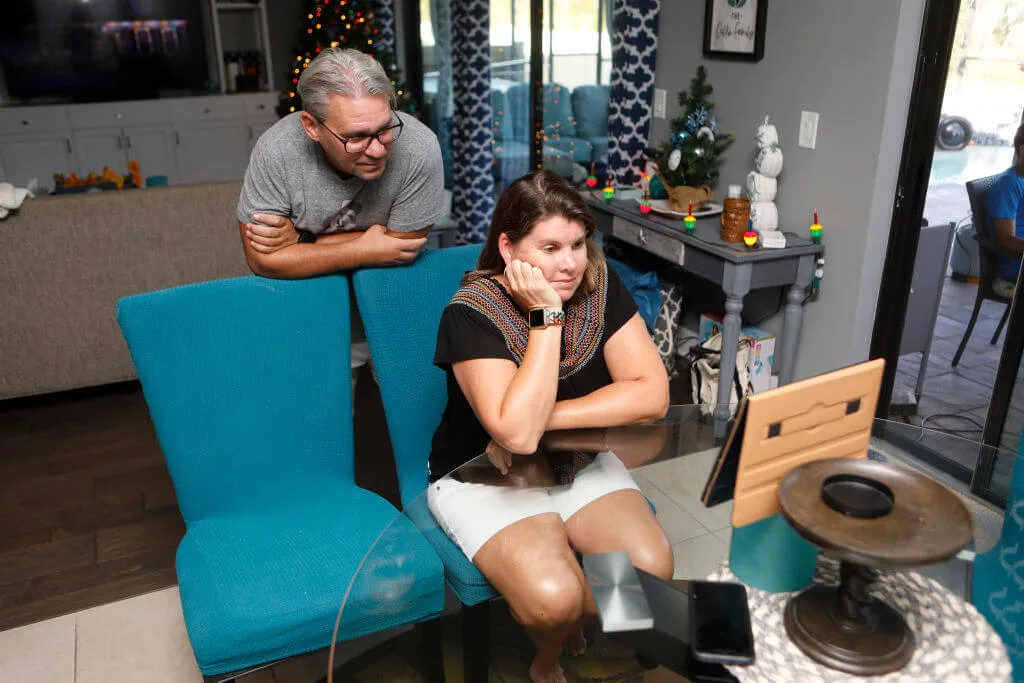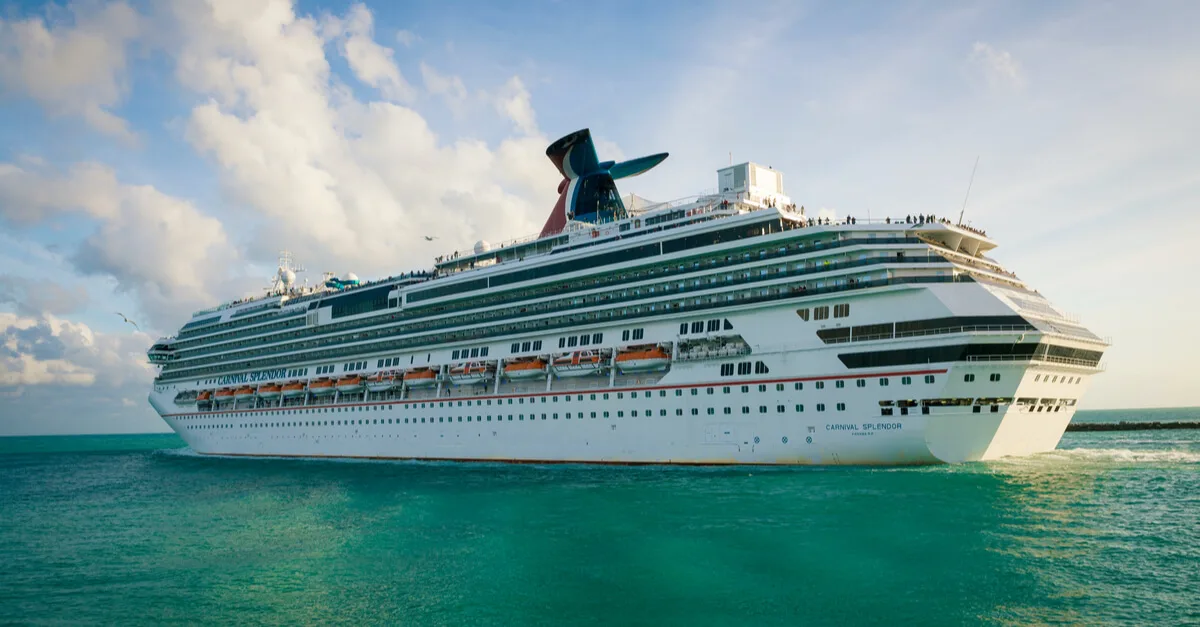
Protesters and police face each other during a rally for George Floyd in Minneapolis on Tuesday, May 26, 2020. (Richard Tsong-Taatarii/Star Tribune via AP)
“He should not have died. What we saw was horrible, completely and utterly messed up. This man’s life matters. He matters. He was someone’s son.”
Four Minneapolis police were fired Tuesday after pinning an unarmed African-American man to the ground with a knee on his neck for over five minutes. A bystander filmed the arrest on their cell phone, recording George Floyd’s pleas that he couldn’t breathe. Floyd was pronounced dead shortly afterward at a hospital Monday evening.
The swift dismissals of the officers stand in marked contrast to a series of previous high-profile police-related incidents, including the 2014 death of Eric Garner in New York, whose dying words Floyd echoed.
Often, the officers involved in deadly encounters between civilians and police have retained their jobs or been suspended with pay—including the police officer who put Garner in a banned chokehold. He was fired five years later and sued the police department for wrongful termination.
In the case of Kentucky EMT Breonna Taylor’s police-related shooting death, the officers involved still retain their jobs and remain on administrative leave.
RELATED: Breonna Taylor: What You Need to Know About the Kentucky EMT Killed by Police While She Was in Bed
In 2019, the Police Integrity Research Group found that only 98 nonfederal law enforcement officers had been arrested in connection with deadly on-duty shootings since 2005.
Floyd’s killing has prompted a massive outcry at local and national levels.
“He should not have died. What we saw was horrible, completely and utterly messed up. This man’s life matters. He matters. He was someone’s son,” Minneapolis Mayor Jacob Frey said in a news conference. “I believe what I saw and what I saw was wrong at every level. This does not reflect the values that [Police] Chief Arradondo has worked tirelessly to instill. It does not represent the training we’ve invested in or the measures we’ve taken to ensure accountability. Being black in America should not be a death sentence.”
The Minneapolis Police Department originally said that Floyd had “physically resisted officers” while being arrested on a charge of forgery. But Tuesday in an interview with North News, Frey and Chief Medaria Arradondo said as additional information from an unnamed community source became available, “it became clear that the original statement was not accurate.” Arradondo asked the FBI to open a federal investigation into Floyd’s death, and Minnesota Attorney General Keith Ellison said his office would also seek justice.
“George Floyd mattered. Somebody loved him. His life was important. It had value. He lost it yesterday in an encounter with law enforcement that once again raises pain and trauma for so many people,” Ellison said.
Minnesota Sens. Amy Klobuchar and Tina Smith, as well as Gov. Tim Walz called for immediate action, and Rep. Ilhan Omar, who represents the congressional district where Floyd died, called it “sickening to watch this black man be killed while helplessly begging for help. Black lives matter isn’t just a chant, it’s a call for justice. It’s a call for our humanity to be recognized. This must stop.”
Floyd’s family told CNN’s Don Lemon that the police officers losing their jobs was not enough: They want them charged with murder. “They need to be charged with murder, because what they did was murder,” Tera Brown, Floyd’s cousin, said. The recording showed one officer with his knee on Floyd’s neck despite entreaties from the crowd and beyond Floyd’s point of consciousness, while other officers watched and did not intervene.
In Minneapolis, kneeling on a suspect’s neck is allowed under the department’s use-of-force policy for officers who have received training in how to compress a neck without applying direct pressure to the airway. It is considered a “non-deadly force option,” according to the department’s policy handbook.
A chokehold is considered a deadly force option and involves someone obstructing the airway. According to the department’s use-of-force policy, officers are to use only an amount of force necessary that would be objectively reasonable.
But two use-of-force experts told The Associated Press that the officer clearly restrained the man too long. They noted the man was under control and no longer fighting. Andrew Scott, a former Boca Raton, Florida, police chief who now testifies as an expert witness in use-of-force cases, called Floyd’s death “a combination of not being trained properly or disregarding their training.”
“He couldn’t move. He was telling them he couldn’t breathe, and they ignored him,” Scott said. “I can’t even describe it. It was difficult to watch.”
Hundreds, organized by the Minneapolis NAACP, Communities Against Police Brutality, and Black Lives Matter Twin Cities, gathered to protest Floyd’s death at the intersection of the arrest and were met by police force, tear gas, and what appeared to be rubber bullets Tuesday night. Another protest is planned for Wednesday afternoon.
Additional reporting from the Associated Press.





Politics

Teamsters and UPS Reach Tentative Deal to Avoid Strike, 340,000 Workers to Get Raises
The tentative deal represents a huge win for full- and part-time UPS Teamster workers, who would get significant pay raises and better working...



One Republican Senator Is Blocking 265 Military Promotions, Leaving the Marines Without a Confirmed Leader
Sen. Tommy Tuberville's decision means these military officers are not getting the pay raises they’re owed, cannot move their families to wherever...
Local News



Teamsters and UPS Reach Tentative Deal to Avoid Strike, 340,000 Workers to Get Raises
The tentative deal represents a huge win for full- and part-time UPS Teamster workers, who would get significant pay raises and better working...



One Republican Senator Is Blocking 265 Military Promotions, Leaving the Marines Without a Confirmed Leader
Sen. Tommy Tuberville's decision means these military officers are not getting the pay raises they’re owed, cannot move their families to wherever...




